Wall paneling ideas – experts offer 9 simple tricks to wake up your walls
Wall paneling ideas and expert guidance to elevate your home in a simple but smart way


There are so many wall paneling ideas out there to pick from when you've settled on this simple trick to elevate your interiors, and it's a smart look that is easy to add to any room, and can look good in any interior setting, from a period home to a modern apartment.
Wall paneling works well for a wide range of rooms too, from bathrooms and powder rooms, creating a barrier between the wall and guarding from splashes and spills, to home offices and bedrooms, creating a sophisticated hotel feel. Wall panelling can be used to conceal problems on the wall, mask wiring and can act as a simple accent, breaking up the space and transforming the look of the decor. They can be made from a real range of materials too, from wood, to MDF, to glass or mirror and even upholstered cushion panels that work well in a bedroom to add that extra cozy feel.
If you're looking for a simple trick to upgrade your home, wood panels could be the bathroom, bedroom or living room wall decor idea you're looking for. Read on for handy hints of how to recreate this smart look
How to execute wall paneling ideas well
Unless you're prepared to do the job yourself as part of a weekend project – which is perfectly possible – find someone who really knows what they're doing as you want your paneling to line up properly, fit with the era of the house and ultimately, look perfect.
'Find a good joiner or a handyman who should easily be able to install paneling using MDF tongue and groove and moldings and always ask to see samples,' says Céline Erlam, co-owner of Indie & Co, an interior design studio based in London that specializes in creating calm, natural and understated interiors.
'For those who are up for a challenge, it's not a hard job to do yourself and there are dozens of DIY tutorials to be found on YouTube. If you're not using an interior designer or architect make sure you plan the design of your paneling well by drawing it out first and checking that your layout is the right proportions with even spacing.'
1. Use paneling to disguise a door

If paneling is used from floor to ceiling on the walls, it can make for a great opportunity to place a hidden door into a secret room. The door will easily disappear into the paneling, distinguishing the space and adding a bit of glamor to your home.
The Livingetc newsletters are your inside source for what’s shaping interiors now - and what’s next. Discover trend forecasts, smart style ideas, and curated shopping inspiration that brings design to life. Subscribe today and stay ahead of the curve.
On this project by Chicago-based interior design firm, PROjECT Interiors, the whole wall was clad in hexagon-patterned millwork, including a secret door. 'Behind the homeowner's wire-brushed and waxed American white oak desk in one of the home offices, we had Escobedo Group clad the whole wall in a beautiful patterned millwork,' explains lead designer at PROjECT Interiors, Laura Wwarnock.
'The panels are actually a hidden door that slides back to reveal a humidor and a gin-tasting bar.' The door can be opened for continuous flow, or closed and disappearing into the background.
2. Try wooden paneling
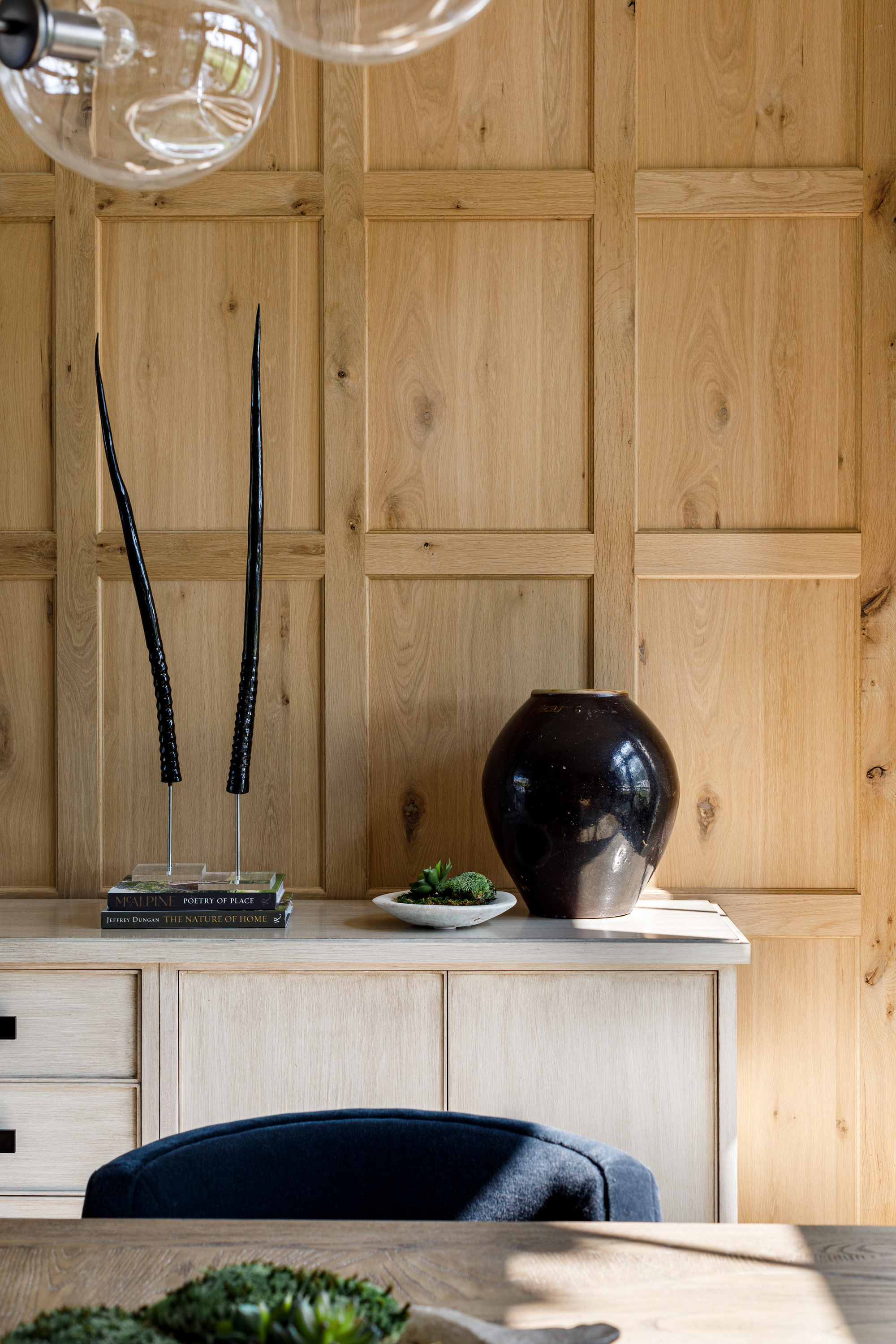
Create a chalet-like feel by paneling your wall in wood. This gives your room a feeling of connection to nature, and can make a stylish background that doesn't require painting, only embraces the finish and texture of natural wood.
At this residence, designed by Pam Maher Design, the dining room walls were paneled in this character grade white oak that is used throughout the rest of the home.
3. Treat your wood for a dramatic effect

Another option is a darkened wood which creates a homely and cozy feel to a room. dSPACE Interiors, based in Chicago, paneled the hallway leading from the entry of the first floor powder room with charred wood. 'The effect is dramatic, says owner, Kevin Toukoumidis.
'The paneling was custom made in Chicago using this Japanese waterproofing technique called 'shou sugi ban' where a wood surface is charred to render it a deep charcoal color. The finished result, called yakisugi, is a blackening of the wood that reveals clean, distinct lines and creates an inherent textural beauty.' The designers added an oiled finish for a final touch as well, and the effect is that light bounces off the texture, casting shadows around the room.
4. Use paneling on the stairwell
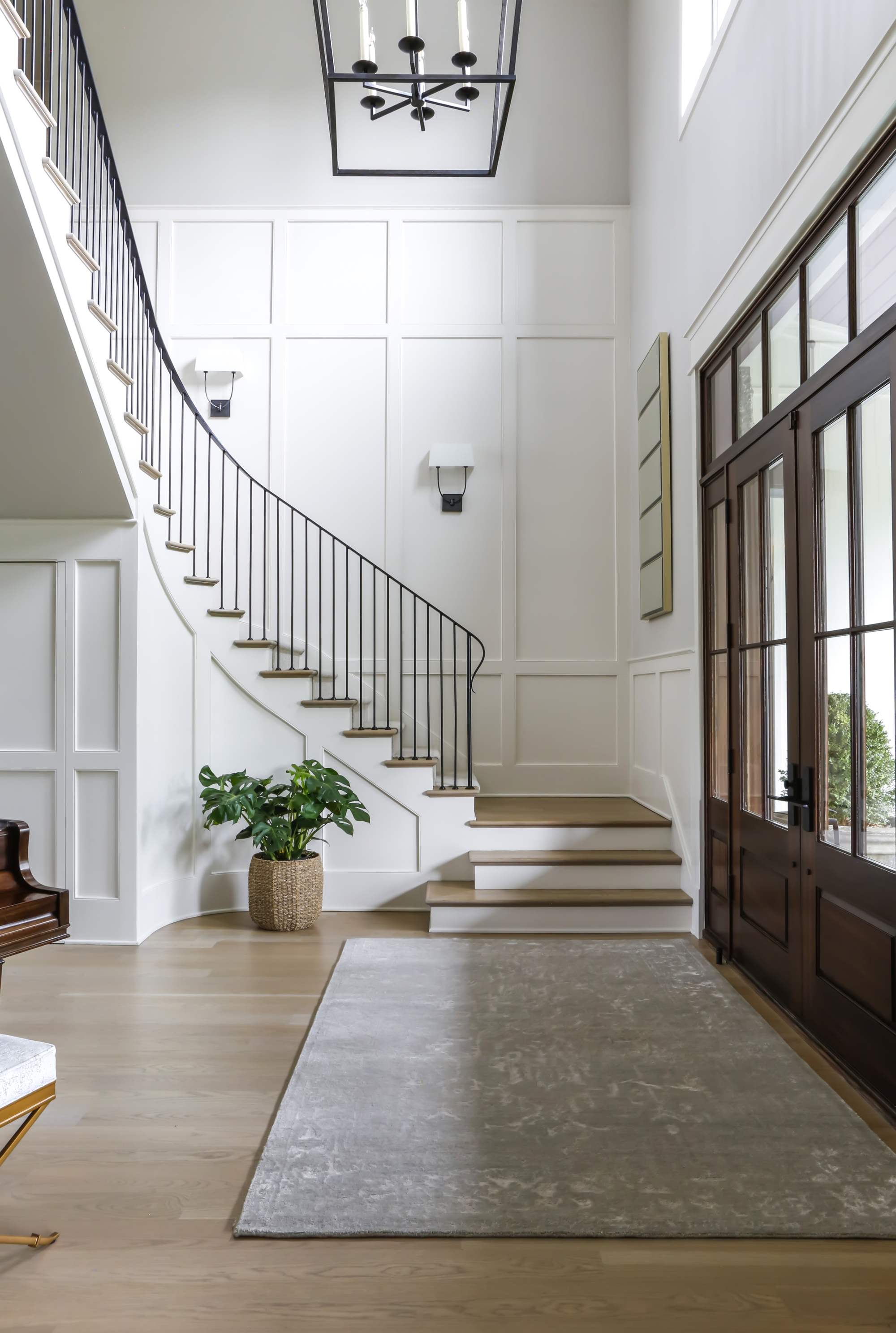
Paneling isn't just reserved for the main rooms of your home, and a staircase can be a nice space for wall paneling to shine. 'The main reason we elected to add wall paneling to this stairwell was to break up the height of the two-story walls,' comments Brad Ramsey, principal designer and founder of Nashville-based, Brad Ramsey Interiors.
'By taking the panels up to the height of the chair rail in the upstairs hallway, we were able to divide the large wall to give it more visual appeal,' Brad adds.
In addition, the designer used the panel design to create a hidden door for the coat closet under the stairs. 'We maintained the character of the entry without having a door breaking up the beauty of the space. A win win!'
5. Consider the era of the house
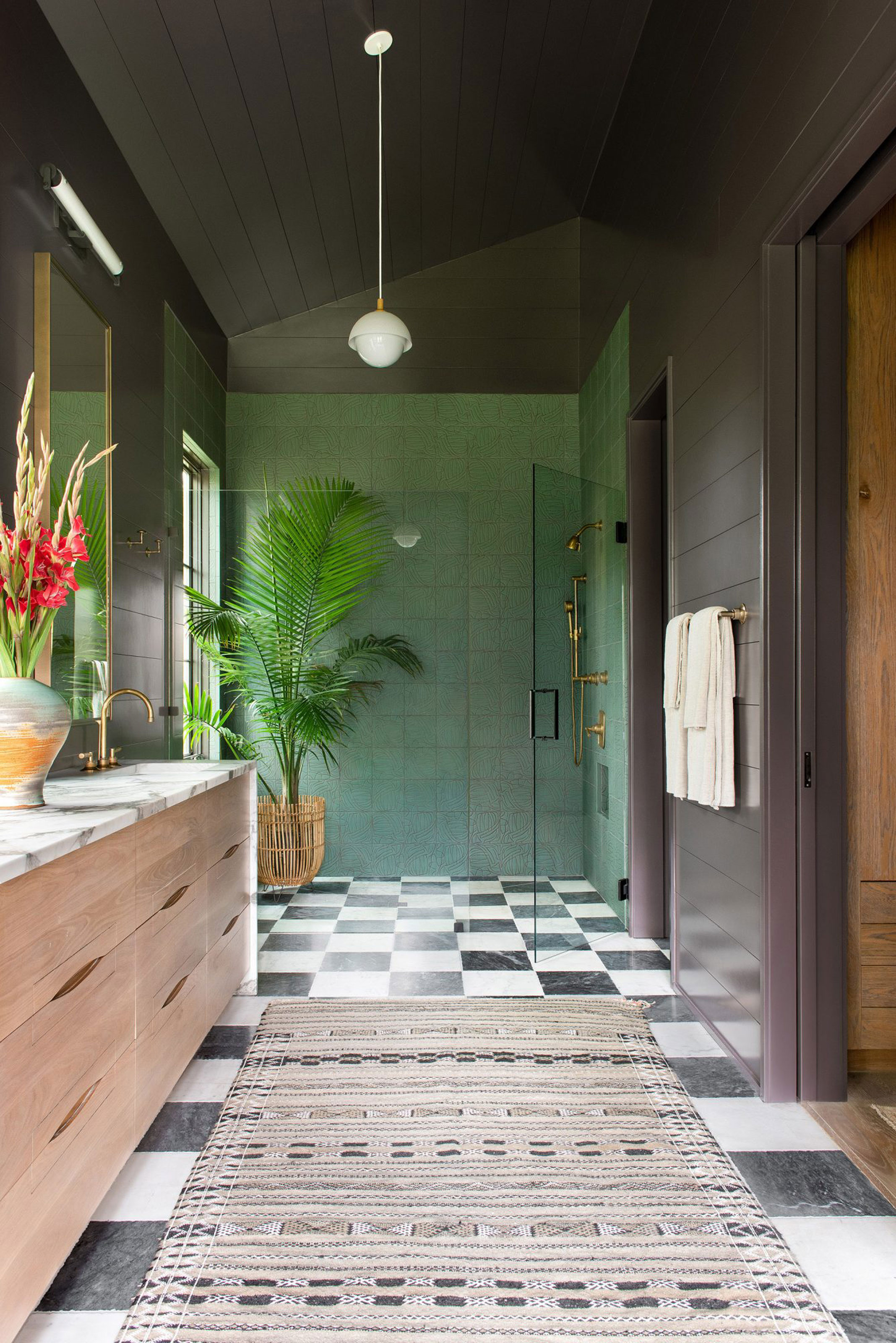
Although wall paneling is used throughout old and new homes, it's worth considering the era of your property before you decide on a style as some designs suit different architecture periods better than others. Modern homes tend to look great with simpler and more contemporary paneling designs as well as designs that fill the whole wall from floor to ceiling, creating the feeling of extra height. While Victorian and Georgian homes can take grander styles, wooden walls and paneling that just takes up the lower half of the wall.
'When thinking about designing paneling, it doesn’t matter what period your property is from, but It's important to do your research so you can ideally match the design of the paneling in line with the period of the house if you want something sympathetic,' explains Céline. 'This is always a key consideration in our projects at Indie & Co. as we want to be as authentic and as sympathetic as possible to the original architecture of the building.'
6. Use wall panels as a space to be creative

Update your panels with fun, contemporary colors on the lower half of the wall, and perk up the upper half of the wall with vibrant wallpaper ideas. Alternatively, pick a panel in differing geometric shapes to give the space some texture. In this scheme by Maddux Creative, this works particularly well against the neutral colors of the room.
7. Try paneling in the bathroom
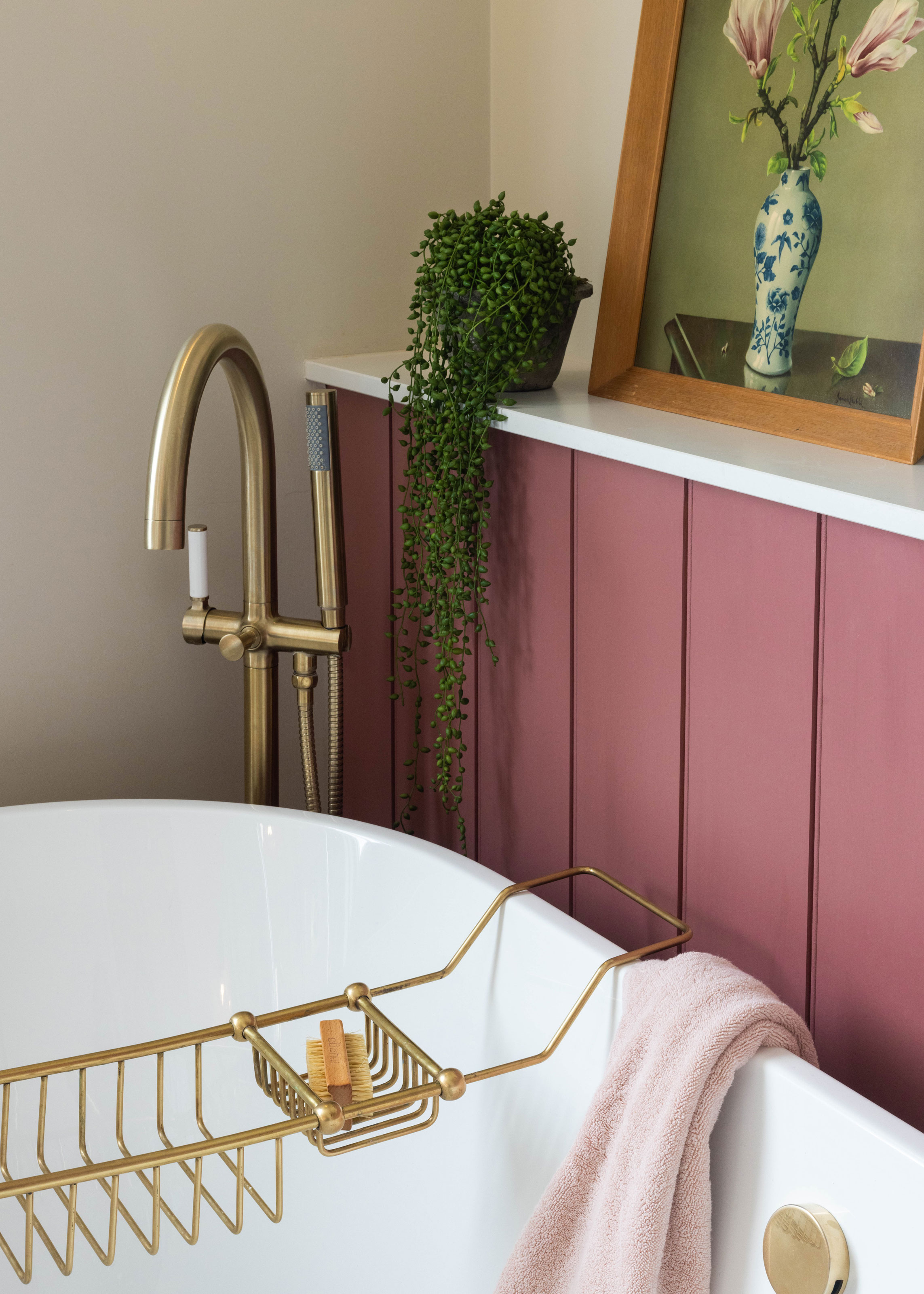
As well as era, certain rooms suit different paneling styles better than other. Traditionally, entrances and entertaining spaces had more ornate paneling ideas while the tucked away rooms like bathrooms had less fancy detailing, but that doesn't mean bathroom wall panel ideas lack substance! Intricate panel designs tend to suit more neutral, classic shades while modern styles can get away with more modern hues.
'For example, the hallway and living room are more likely to have grander or more sophisticated style paneling, and this would have most likely come down to a status thing; these were the rooms where guests were received,' explains interior designer Céline Erlam, co-owner of Indie & Co. an interior design studio based in London that specializes in creating calm, natural and understated interiors.
'Whereas a powder room or bathroom might suit simpler and more modest styles, so are better suited to a tongue and groove design.'
8. PICK WAINSCOTING IN HIGH TRAFFIC AREAS

Wainscoting is paneling just on the lower half of the wall and it works particularly well in high traffic areas like entrance halls and for powder room ideas, plus you get to play around with color and wallpaper more, either sticking to the same tones or mixing it up a bit.
'Wainscoting over fully paneled walls works particularly well in hallways and powder rooms as a way to protect the walls from scuffs and marks,' says Céline. 'Usually painted in a more durable grade of paint such as eggshell - we like to use intelligent finishes - which are easily wipeable so easier to clean.'
9. PLAY WITH COLOR
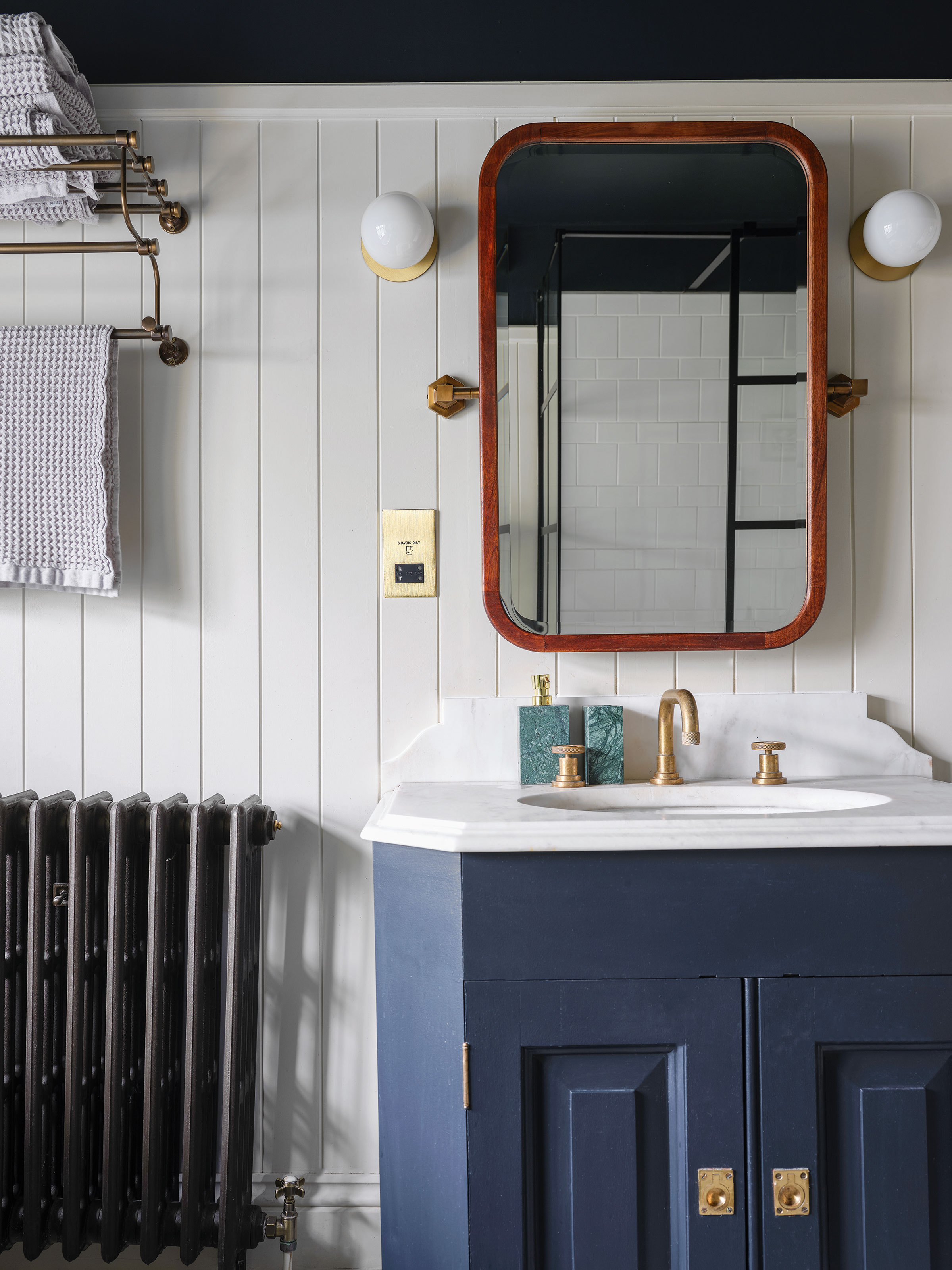
Paneling creates the opportunity to be playful with color and pattern and provides a great way to mix the old and new. Traditional paneling in a vibrant hue works so well, and by picking one tone and using it on the painted paneling as well as the wallpaper above (no matter the pattern), helps add personality while keeping a sense of harmony. Shiplap paneling is a more modern and simple design, which looks good painted in either a classic white shade or something a bit brighter and bolder.
'Keeping the paneling the same color as the wall can give a great subtle texture to the space. Or for those who are feeling more daring it's a great opportunity to be more playful with color and can look fab mixed with the right wallpaper,' adds Céline. 'We love the combo of Midbec’s Apelviken wallpaper with Oval Room Blue from Farrow & Ball.'
How can I make my panel walls look good?
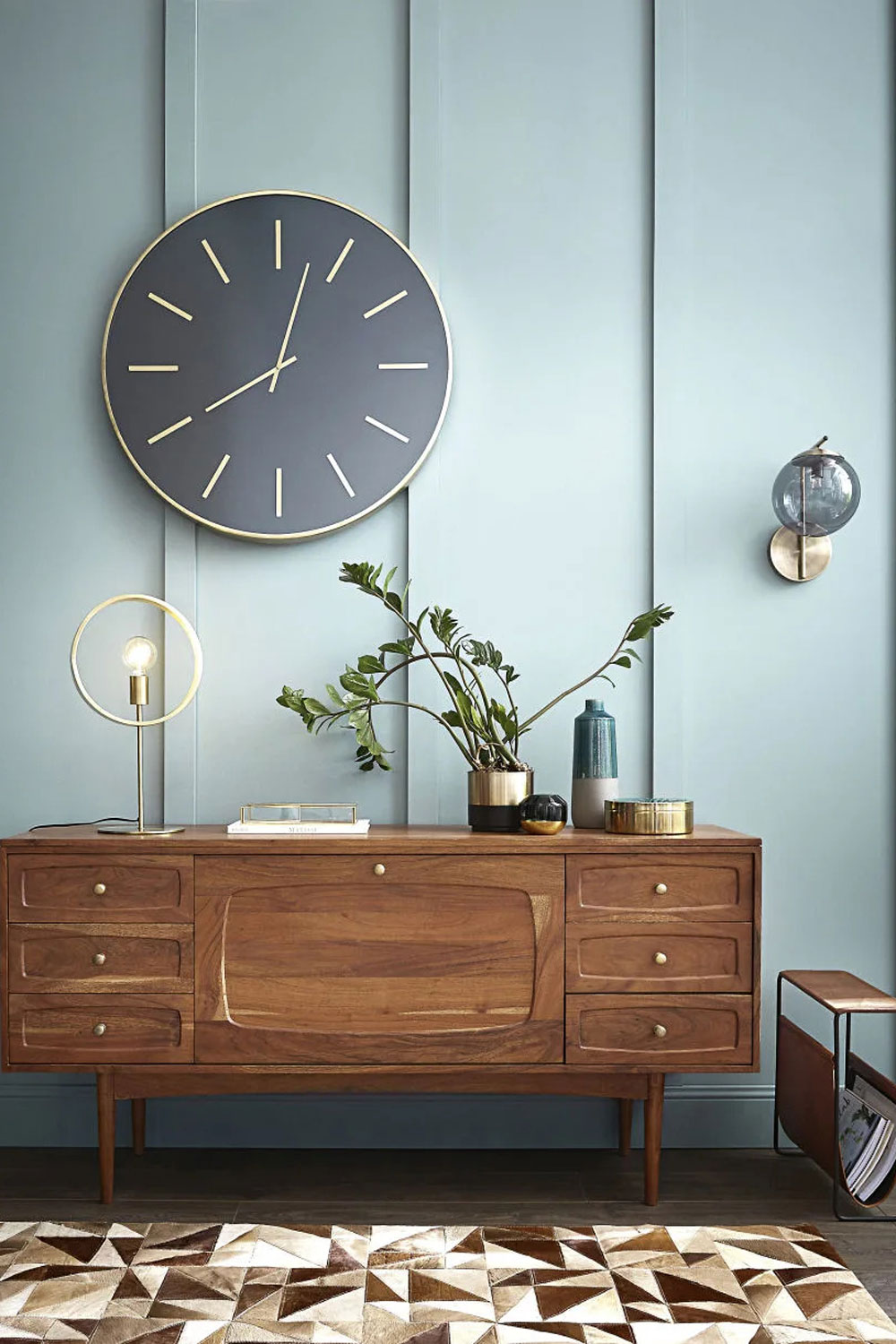
Wall paneling has really made a comeback over the past few years in interior design trends and because it comes in a variety of styles, there's a paneling idea to suit most schemes.
If your home already has paneling and you want to bring it to life, then consider painting your paneling in a bold hue and match that exact color to the remaining walls or woodwork too for a dramatic effect. And if you're after a hit of pattern, either wallpaper the remaining walls above in something jazzy or create a two-tone effect by running a line of tape and opt for contrasting paint colors on your paneling.; this works particularly well if you're after a very modern, graphic look.
Does wall paneling make a room look smaller?

Wall paneling doesn't necessarily make a room feel smaller. It depends on the type of cladding you get and how you choose to install it. Darker finishes, whether original wood or paint ideas can make a room feel small. But you can also install light-coloured cladding to open your room up.
There are advantages to darker tones and woods though as they can can be used to make a room feel cozier and more intimate.
Consider adding vertical planks of wood to a wall; it could help the space seem larger as they'll draw the eye upwards towards the ceiling.
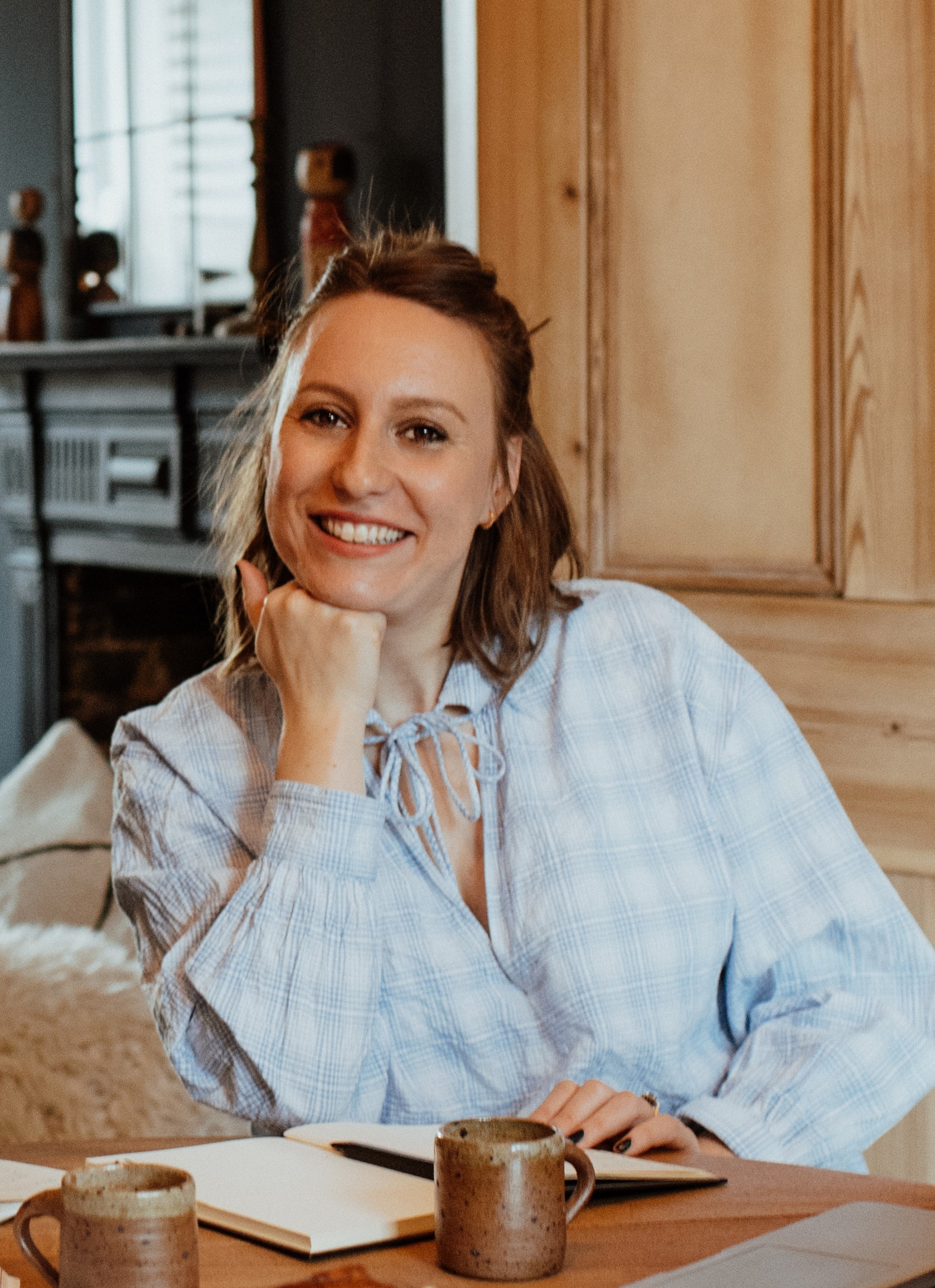
As the Houses Editor on Livingetc, Rachel has been obsessed with property ever since she was a kid. With a diploma in interior design and more than a decade working on interior magazines under her belt, she feels very at home sourcing the best contemporary houses the world has to offer for Livingetc. It's not just the day job either, she admits she's spent a scary amount of her own time researching schemes for her own renovations - scrolling Instagram, stalking Rightmove and Modern House, flicking through magazines and snooping in other peoples' windows - so she really does live and breathe houses on a daily, if not hourly, basis. Before Livingetc, Rachel had a stint finding homes for Ikea Family magazine where she was lucky enough to gallivant around the world on shoots meeting and interviewing interesting people, all with a very keen eye for blending high-end design with everyday items from Ikea. It inspired her to not be afraid of mixing new and old, expensive and affordable, vintage and modern and so Rachel's current Victorian terrace in north London is very much an updated, contemporary take on a period property; think open-plan modern kitchen with concrete floors, feature fireplaces and her grandmother’s paintings on the walls. Rachel is currently crushing on reeded glass, large gingham prints, squishy curved furniture; like Buchanan Studio’s Studio chair, and vintage wall sconces; she especially adores Retrouvius for sourcing antique finds and feels inspired by Lonika Chande, Beata Heuman and Matilda Goad and already can’t wait to start planning her next home, wherever that might be.